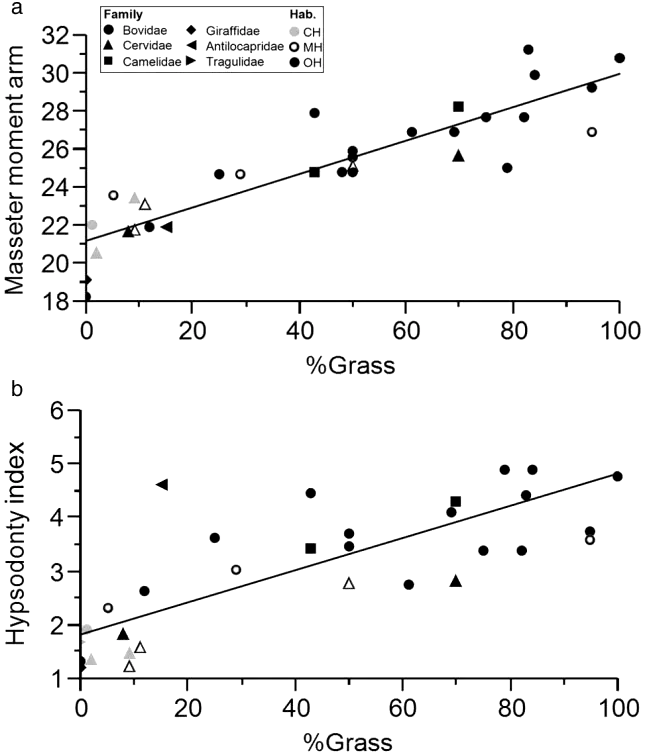Masseter moment arm as a dietary proxy in herbivorous ungulates

Abstract
The moment arms of jaw muscles and the hypsodonty index (HI) have been widely used to infer diet preferences in extinct species. Here, we intend to evaluate the use of the masseter moment arm and HI as dietary proxies in herbivorous ungulates and analyse its relations to diet preference, habitat selection and two continuous variables: percentage of grass in natural diet (%Grass) and annual precipitation (PREC). Masseter moment arm (Mm) showed a strong correlation to diet preference and %Grass but not for habitat selection and PREC. Contrarily, HI showed similar correlation with diet preference and %Grass but also with habitat selection and PREC. The results show that Mm predominately reflects adaptation to tougher, rich in grass diets, while HI, as previously found, indicates adaptation to the wear effect of both diet and environment. This approach has been useful in identifying the habits of two extinct very large Pleistocene South American ungulates. Macrauchenia patachonica, an extinct litoptern, is interpreted as an open-habitat high browser and Toxodon platensis, an extinct notoungulate, as a grazer.